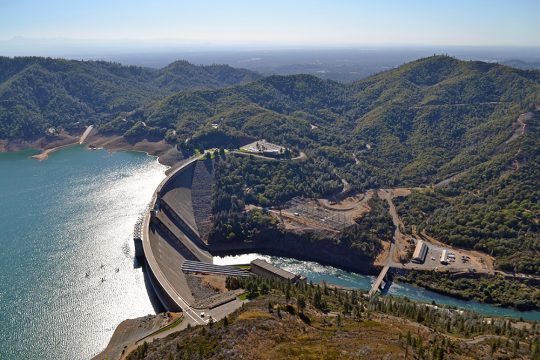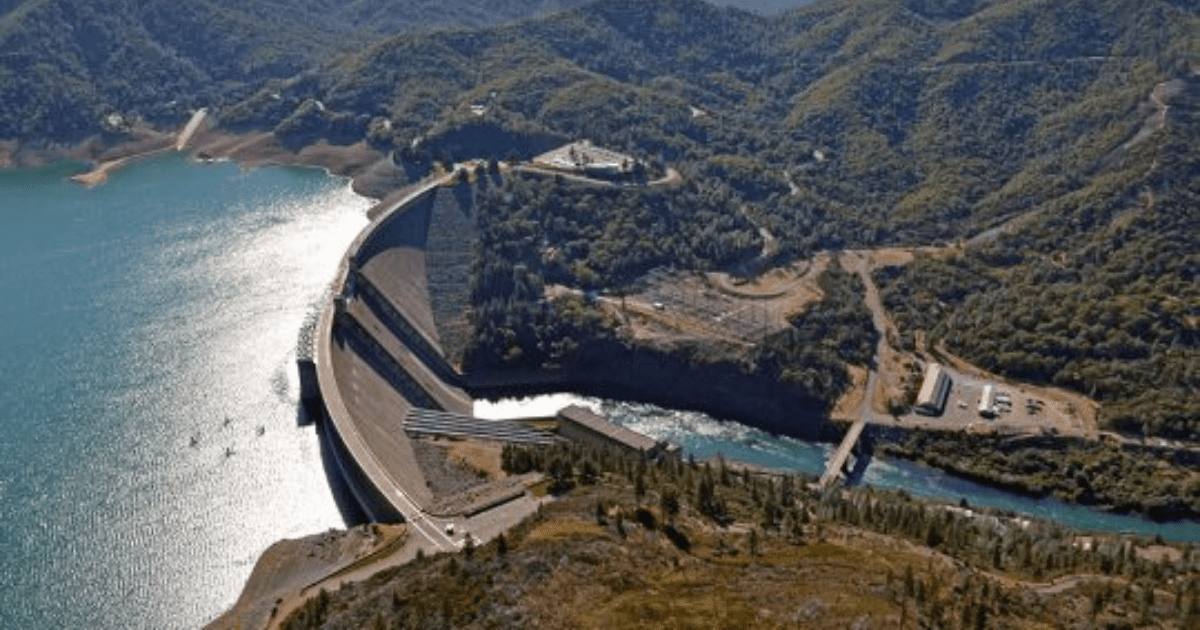Lawsuit Filed to Block Shasta Dam Raise

Photo courtesy Bureau of Reclamation
On Tuesday, May 14, CA Attorney General Xavier Bacerrra filed a lawsuit to block Westlands Water District from taking unlawful action to assist in the planning and construction of a project to raise the height of Shasta Dam. Joining AG Bacerra, a coalition represented by Earthjustice has filed a separate suit. CalTrout stands with AG Bacerra and the Earthjustice coalition in strong opposition to this unlawful dam raise plan and has consistently advocated on behalf of the parties that would be injured by such an illegal attempt to circumvent established state law.
When Shasta Dam was originally completed in 1945, it was an engineering marvel — one that provided flood control to the Central Valley, power to its communities, and water to the Central Valley Project’s irrigators.
Unfortunately, the effects weren’t all positive.
The day the gates closed, as much as 75 percent of California’s prime salmon and steelhead spawning habitat disappeared. The winter-run chinook salmon — the only winter-run chinook in the world — lost access to the cold, spring-fed waters of the McCloud, where it evolved.
A hatchery was built to mitigate the salmon habitat losses, but new research tells us the hatchery may be hurting the salmon more than it’s helping them, degrading wild fish genetics and driving “boom and bust” population cycles common to monocultures.
Meanwhile, the flows in the Sacramento River below the dam were managed for water deliveries, not fish. Further downstream, the river was channelized, eliminating the floodplains — which we’re now learning are essential habitat for juvenile salmon.
In other words, Shasta Dam was good for part of the state, but a disaster for salmon, steelhead and other fish.
Raising the dam would only compound these well-documented negative impacts. In fact, Federal studies of the proposal concluded that raising the dam would increase the already inundated portion of the lower McCloud River by more than one-third. This further inundation would have a significant negative impact on the river’s unique habitats and blue-ribbon trout fishery, and would submerge sacred sites of the Winnemem Wintu Native American Tribe. Much of the Winnemem Wintu’s native land was already destroyed by the construction of the original dam in 1945.
Shasta Dam is clearly an engineering wonder, but it’s part of CalTrout’s mission to see that it doesn’t become a larger environmental and cultural disaster. As such, CalTrout reiterates its firm stance in opposition to any plan to raise the dam and we applaud and affirm the legal actions taken by AG Bacerra and the Earthjustice coalition.
Related Posts:
https://caltrout.org2013/09/the-shasta-dam-engineering-marvel-neednt-be-an-environmental-disaster/
https://caltrout.org2013/01/caltrouts-comments-on-the-bors-shasta-dam-raising-draft-feasibility-report/





